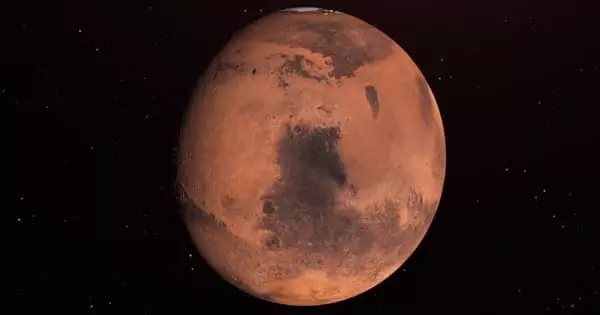We have believed since ancient times that ‘Mars,’ the mysterious red planet, brought war, pestilence, and the need for human sacrifice. The Romans referred to ‘Mars’ as their ‘God of War.’ This planet’s mystery has always piqued the interest of earthlings, who have an irrational belief that an alien civilization similar to ours exists. Several films have been made based on this concept, in which green Martians with unusual heads and clothing are seen attempting to take over the Earth.
Until the 1960s, the conception of tellurians was based on movies, picturization, or what scientists could see through a telescope, among other things. The space race then began, and ‘Mars’ became the preferred target for scientists’ curiosity. The beginning of the space research era aided mankind in discovering the universe’s hidden secrets. The United States and the former Soviet Union pioneered space exploration by sending several spacecraft and satellites on expeditions to study the Earth’s atmosphere, weather, and oceans, as well as the Sun and other celestial bodies and planets such as the Moon, etc. All of these expeditions returned with priceless information about the evolution and history of the earth, moon, and other planets and celestial bodies.
At the axis, ‘Mars’ and the Earth have nearly equal rotational periods. Mars rotates on its axis in 24 hours and 37 minutes, so a Mars day is the same as an Earth day. Because of its eccentric orbit, Mars takes 687 days to rotate around the sun, whereas Earth takes approximately 365 days. Mars’ gravity is one-third that of the Earth’s, and its atmosphere is much thinner than that of the Earth; as a result, atmospheric pressure on ‘Mars’ is only one percent that of the Earth.
Exploring the mystery of Mars
(1) In 1962, the former Soviet Union launched Mars 1, which successfully left Earth’s orbit but failed due to a loss of communication with the craft en route.
(2) The Mariner-3, a US spacecraft launched in 1964, also failed when its solar panels could not be opened.
(3) The same year, the United States launched another spacecraft, Marine-4, which sent 22 close-up photographs of ‘Mars,’ revealing a cratered, desert surface.
(4) The United States launched Mariner-6 again in 1969, passing within 3400 km of the planet and sending a video of the equatorial regions as well as surface temperature and atmospheric pressure measurements.
(5) In the same year, 1969, the United States launched another Mariner-7, which passed over the Southern Hemisphere and returned approximately 200 photographs. So far, all of the Mariners launched by the United States have been flybys, with no intention of landing on the planet’s surface.
(6) In 1971, USSR launched an orbiter/lander Mars-2, but it crashed during a dust storm.
(7) Again in the same year USSR launched Mars-3 that made the first successful landing on Mars, transmitted 20 seconds of data until contact was lost in dust storms.
(8) Mariner-9, launched by the United States in 1971, was the first US spacecraft to orbit ‘Mars.’ It returned the first images of the Martian moons Phobos and Deimos in high resolution. The presence of massive volcanoes on Mars, larger than any previously known in the solar system, was an important discovery made by the Mariner-9. The Mariner-9 also detected a massive amount of hydrogen escaping the planet, indicating that thousands of gallons of water evaporate every day. Mariner-9 discovered that Mars’ atmosphere is 100 times thinner than that of Earth, consisting primarily of carbon dioxide, carbon monoxide, water vapors, and a trace of oxygen. During this time, the USSR also launched three more spacecraft. Mars-4 was launched in 1973, followed by Mars-6 the following year, and Mars-7 again in 1973, but none were successful due to one or more technical issues.
Viking-I and Viking-11 by the USA
The Viking-I and Viking-II spacecraft sent by the United States were more successful in 1976. Viking-I was the first American orbiter to land on Mars. It returned thousands of images and discovered water ice in the polar cap. Viking-II, launched the same year, detected the presence of Argon and Nitrogen in Mars’ atmosphere. It also sent thousands of images, which revealed that the sky on Mars is blue, the soil is red, and the rocks are greyish green and black in color. Scientists who analyzed Viking data concluded that, while Mars would have lost much of its water, it still has plenty in frozen form, and Mars is much colder than Earth. Mars’ average temperature was discovered to be below the freezing point of water.
None of the Viking scientists could speculate on the possibility of life on Mars. Scientists concluded that more ultraviolet light reaches the Martian surface than the Earth’s because the Earth’s ozone shield blocks most ultraviolet rays. Viking’s striking color photographs proved beyond doubt that the planet is strikingly red, with varying shaded colors in its dust, rocks, and boulders. In 1977, an orbiter passed within 90 kilometers of Phobos, one of Mars’s moons, and sent close-up pictures in routine, revealing that both moons are potato-shaped rather than spherical, and do not have the same color as Mars. Following the USA’s two Viking missions, the USSR launched the Phobos I-orbiter/lander in 1988 to investigate the moon Phobos, but the mission failed due to a faulty command that caused the spacecraft’s solar panels to point away from the sun. The United States sent a Mars observer again in 1992 to conduct high and low-resolution imaging of the planet, surface investigation, and weather analysis, but it lost contact with Earth on August 21, 1993, just before entering Mars’ orbit. The Viking mission was unable to move, despite having robotic arms capable of reaching out and scooping up soil.
Pathfinder, a spacecraft launched from Cape Canaveral on December 4, 1996, landed on Mars on July 4, 1997, after a 5000-kilometer journey. Pathfinder returned detailed photographs of a harsh landscape with signs of water availability, a basic requirement for life. The Pathfinder and its rover Sojourner collected a wealth of data on Mars’ rocks, soils, and atmosphere.
It returned the first live images of the planet’s topography, and its tiny rover explored a variety of rocks and analyzed their mineral composition with its cameras and on board, X-ray spectrometer analysis indicated the presence of oxidized iron and rusting of the surface of Mars. Pathfinder images and data provided the most convincing evidence that the Red Planet had an abundance of water millions of years ago. NASA launched the Mars Global Surveyor on November 7, 1996, and the spacecraft began mapping operations on March 27, 1998, revealing clear evidence of an ancient hydrothermal system near the equator, implying that a thicker atmosphere existed on Mars in the past.
Despite the fact that the rovers sent vital data to Earth, they lacked scientific instruments and were unable to move far from their lander. The most recent MER robots sent to Mars were designed to be robotic geologists. The rovers’ instruments and equipment were primarily intended to investigate the rocks. It is a much larger vehicle, weighing more than 180 kg and capable of traveling tens of meters per day, carrying an entire set of scientific instruments.
We don’t know when we’ll be able to send a human to Mars. Failures of various missions sent to Mars, as well as the enormous cost involved in sending spacecraft, are some of the reasons for current reservations about sending humans. So far, nothing like this has been attempted and proving the concept would require several test missions.
So far, the quest for understanding the mystery of ‘Mars’ has been insatiable, but each mission brings us more and more information and varied knowledge about this red planet, and we hope to find more surprises on Mars in the future.
















